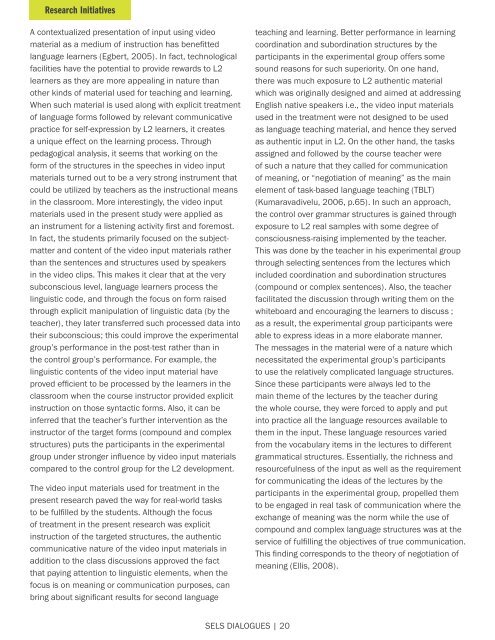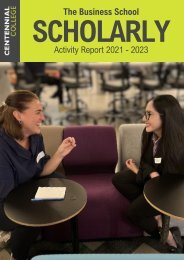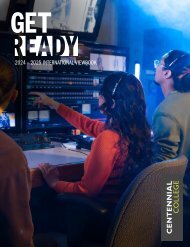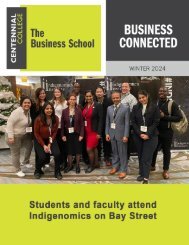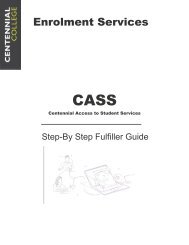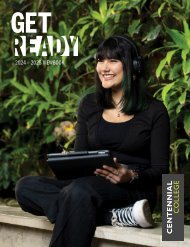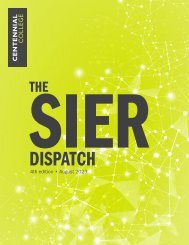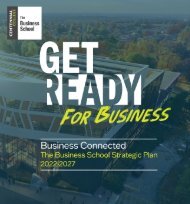SELS Dialogues Journal Volume 3 Issue 1
A diverse collection of articles, each offering a unique perspective and contributing to the ever-expanding landscape of knowledge and creativity.
A diverse collection of articles, each offering a unique perspective and contributing to the ever-expanding landscape of knowledge and creativity.
You also want an ePaper? Increase the reach of your titles
YUMPU automatically turns print PDFs into web optimized ePapers that Google loves.
Research Initiatives<br />
A contextualized presentation of input using video<br />
material as a medium of instruction has benefitted<br />
language learners (Egbert, 2005). In fact, technological<br />
facilities have the potential to provide rewards to L2<br />
learners as they are more appealing in nature than<br />
other kinds of material used for teaching and learning.<br />
When such material is used along with explicit treatment<br />
of language forms followed by relevant communicative<br />
practice for self-expression by L2 learners, it creates<br />
a unique effect on the learning process. Through<br />
pedagogical analysis, it seems that working on the<br />
form of the structures in the speeches in video input<br />
materials turned out to be a very strong instrument that<br />
could be utilized by teachers as the instructional means<br />
in the classroom. More interestingly, the video input<br />
materials used in the present study were applied as<br />
an instrument for a listening activity first and foremost.<br />
In fact, the students primarily focused on the subjectmatter<br />
and content of the video input materials rather<br />
than the sentences and structures used by speakers<br />
in the video clips. This makes it clear that at the very<br />
subconscious level, language learners process the<br />
linguistic code, and through the focus on form raised<br />
through explicit manipulation of linguistic data (by the<br />
teacher), they later transferred such processed data into<br />
their subconscious; this could improve the experimental<br />
group’s performance in the post-test rather than in<br />
the control group’s performance. For example, the<br />
linguistic contents of the video input material have<br />
proved efficient to be processed by the learners in the<br />
classroom when the course instructor provided explicit<br />
instruction on those syntactic forms. Also, it can be<br />
inferred that the teacher’s further intervention as the<br />
instructor of the target forms (compound and complex<br />
structures) puts the participants in the experimental<br />
group under stronger influence by video input materials<br />
compared to the control group for the L2 development.<br />
The video input materials used for treatment in the<br />
present research paved the way for real-world tasks<br />
to be fulfilled by the students. Although the focus<br />
of treatment in the present research was explicit<br />
instruction of the targeted structures, the authentic<br />
communicative nature of the video input materials in<br />
addition to the class discussions approved the fact<br />
that paying attention to linguistic elements, when the<br />
focus is on meaning or communication purposes, can<br />
bring about significant results for second language<br />
teaching and learning. Better performance in learning<br />
coordination and subordination structures by the<br />
participants in the experimental group offers some<br />
sound reasons for such superiority. On one hand,<br />
there was much exposure to L2 authentic material<br />
which was originally designed and aimed at addressing<br />
English native speakers i.e., the video input materials<br />
used in the treatment were not designed to be used<br />
as language teaching material, and hence they served<br />
as authentic input in L2. On the other hand, the tasks<br />
assigned and followed by the course teacher were<br />
of such a nature that they called for communication<br />
of meaning, or “negotiation of meaning” as the main<br />
element of task-based language teaching (TBLT)<br />
(Kumaravadivelu, 2006, p.65). In such an approach,<br />
the control over grammar structures is gained through<br />
exposure to L2 real samples with some degree of<br />
consciousness-raising implemented by the teacher.<br />
This was done by the teacher in his experimental group<br />
through selecting sentences from the lectures which<br />
included coordination and subordination structures<br />
(compound or complex sentences). Also, the teacher<br />
facilitated the discussion through writing them on the<br />
whiteboard and encouraging the learners to discuss ;<br />
as a result, the experimental group participants were<br />
able to express ideas in a more elaborate manner.<br />
The messages in the material were of a nature which<br />
necessitated the experimental group’s participants<br />
to use the relatively complicated language structures.<br />
Since these participants were always led to the<br />
main theme of the lectures by the teacher during<br />
the whole course, they were forced to apply and put<br />
into practice all the language resources available to<br />
them in the input. These language resources varied<br />
from the vocabulary items in the lectures to different<br />
grammatical structures. Essentially, the richness and<br />
resourcefulness of the input as well as the requirement<br />
for communicating the ideas of the lectures by the<br />
participants in the experimental group, propelled them<br />
to be engaged in real task of communication where the<br />
exchange of meaning was the norm while the use of<br />
compound and complex language structures was at the<br />
service of fulfilling the objectives of true communication.<br />
This finding corresponds to the theory of negotiation of<br />
meaning (Ellis, 2008).<br />
<strong>SELS</strong> DIALOGUES | 20


